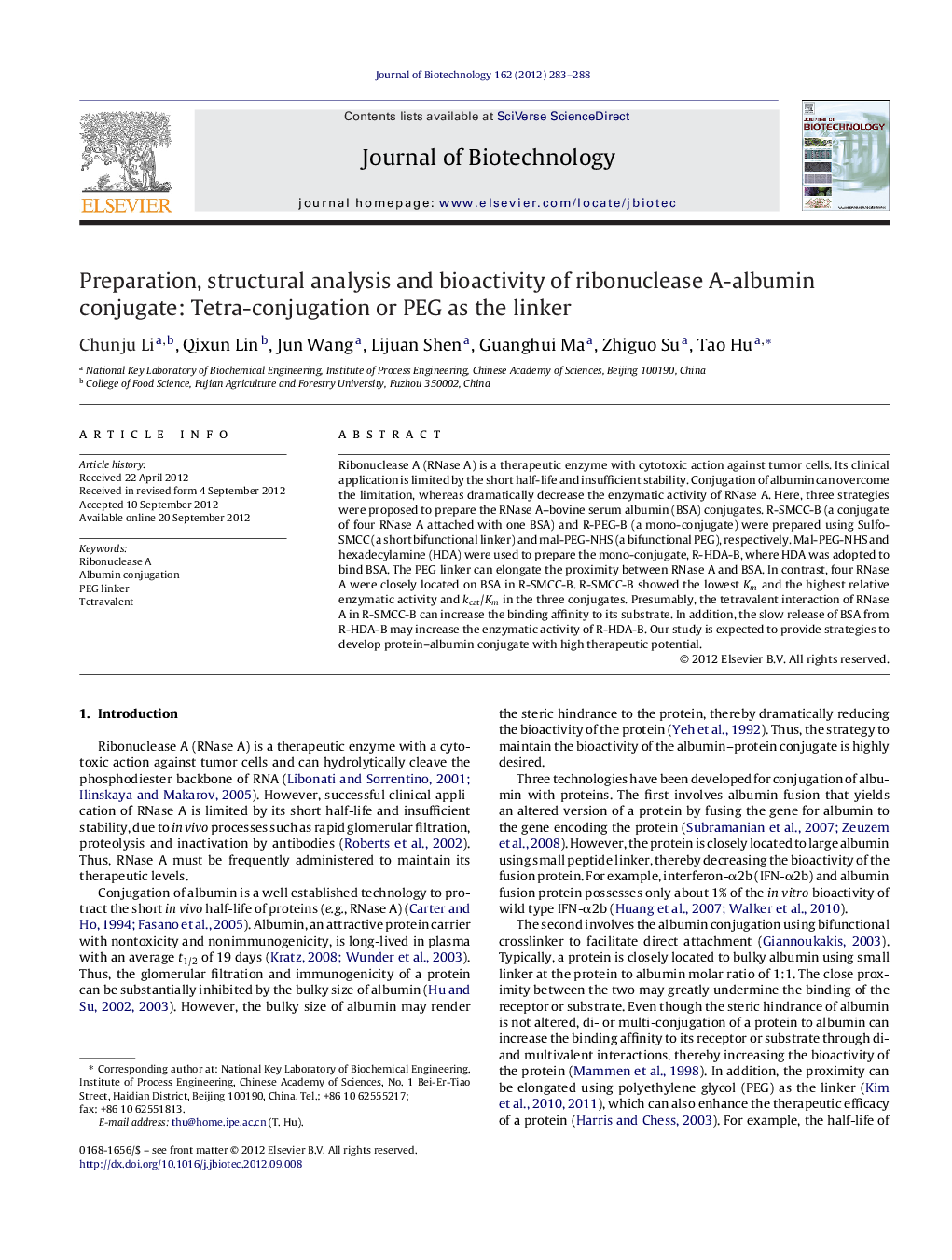| کد مقاله | کد نشریه | سال انتشار | مقاله انگلیسی | نسخه تمام متن |
|---|---|---|---|---|
| 23639 | 43459 | 2012 | 6 صفحه PDF | دانلود رایگان |

Ribonuclease A (RNase A) is a therapeutic enzyme with cytotoxic action against tumor cells. Its clinical application is limited by the short half-life and insufficient stability. Conjugation of albumin can overcome the limitation, whereas dramatically decrease the enzymatic activity of RNase A. Here, three strategies were proposed to prepare the RNase A–bovine serum albumin (BSA) conjugates. R-SMCC-B (a conjugate of four RNase A attached with one BSA) and R-PEG-B (a mono-conjugate) were prepared using Sulfo-SMCC (a short bifunctional linker) and mal-PEG-NHS (a bifunctional PEG), respectively. Mal-PEG-NHS and hexadecylamine (HDA) were used to prepare the mono-conjugate, R-HDA-B, where HDA was adopted to bind BSA. The PEG linker can elongate the proximity between RNase A and BSA. In contrast, four RNase A were closely located on BSA in R-SMCC-B. R-SMCC-B showed the lowest Km and the highest relative enzymatic activity and kcat/Km in the three conjugates. Presumably, the tetravalent interaction of RNase A in R-SMCC-B can increase the binding affinity to its substrate. In addition, the slow release of BSA from R-HDA-B may increase the enzymatic activity of R-HDA-B. Our study is expected to provide strategies to develop protein–albumin conjugate with high therapeutic potential.
► PEG linker elongates the proximity between RNase A and BSA.
► R-SMCC-B showed a high relative enzymatic activity of 67.3%.
► Slow release of BSA from R-HDA-B increased its enzymatic activity.
Journal: Journal of Biotechnology - Volume 162, Issues 2–3, 31 December 2012, Pages 283–288